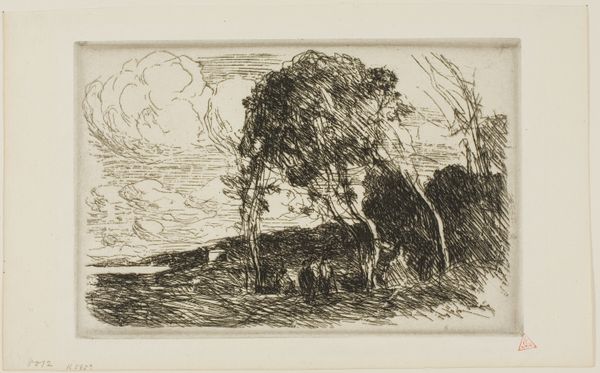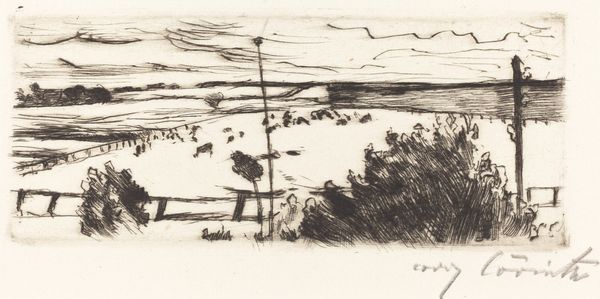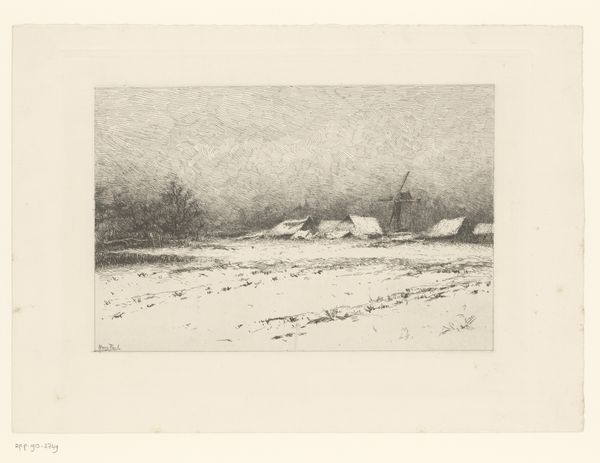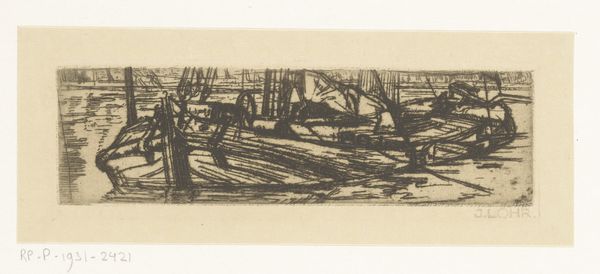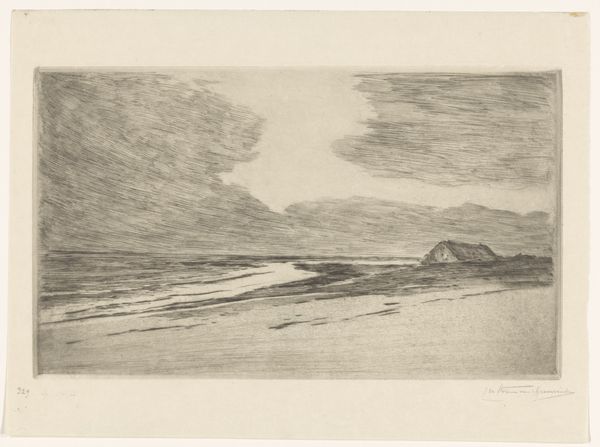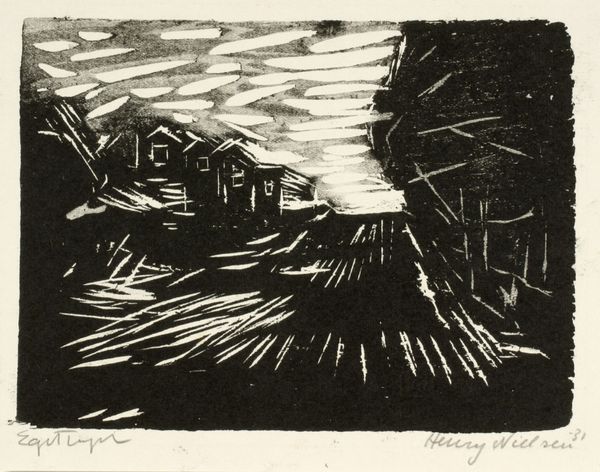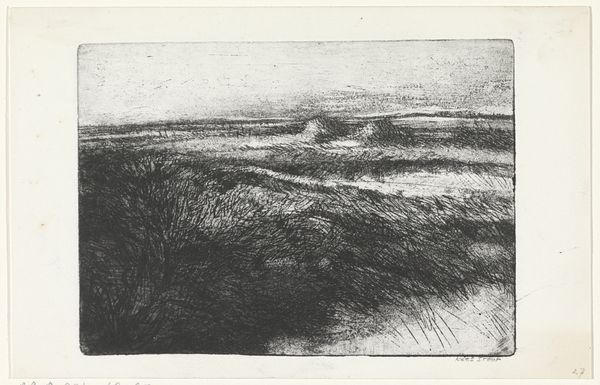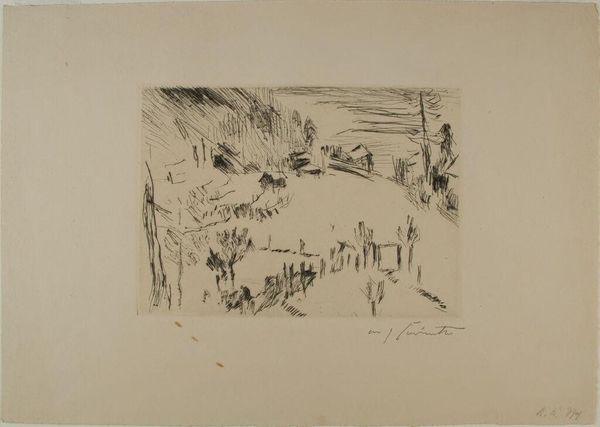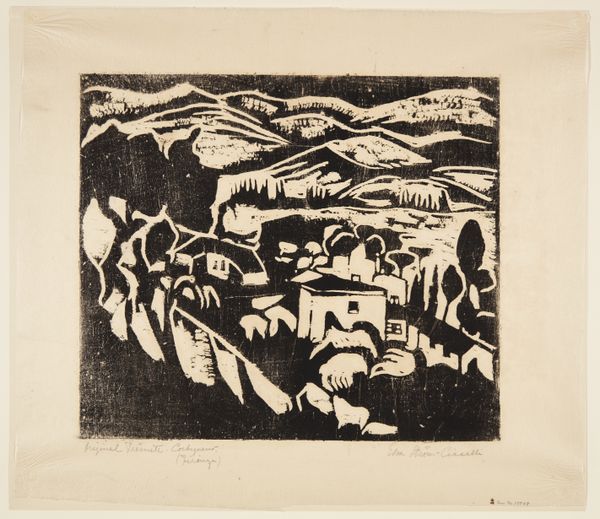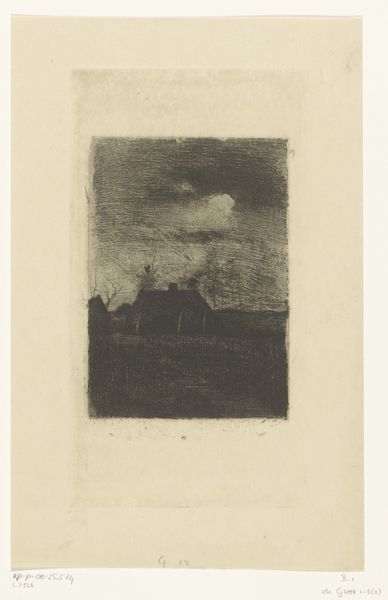
drawing, print, etching
#
drawing
#
ink drawing
# print
#
pen sketch
#
etching
#
pencil sketch
#
landscape
#
german-expressionism
#
cityscape
Copyright: Public Domain: Artvee
Curator: Welcome. Before us is Ernst Ludwig Kirchner’s etching, "Acker und Häuser im Erzgebirge," or "Fields and Houses in the Erzgebirge," completed in 1906. Editor: Immediately, I'm struck by its starkness. The high contrast between the black ink and the bare paper gives it a kind of rawness. Almost unfinished. Curator: Well, German Expressionism, as an artistic movement, aimed to present subjective emotion, particularly angst. The visible hatching and cross-hatching might intensify that unease. Editor: Precisely. It is less about accurate representation, wouldn't you agree, and more about conveying feeling? Look at those slashing lines that represent the sky – almost violent. It’s like a storm brewing, both literally and figuratively. Curator: Consider the setting itself, the Erzgebirge mountains. They have a long history of mining, and in the early 20th century they faced a loss of rural industry. Kirchner frequently reflected alienation through imagery, wouldn't it make sense for him to be critiquing industrial society? Editor: Perhaps, and that’s visually reinforced by the clustering of the houses. There are clear, bold delineations separating them, not a smooth harmony of forms blending into one another. This underscores the lack of integration or shared space, the visual depiction of alienation you referred to. Curator: There's also a psychological element to these sharply defined, closed spaces. The houses may represent insular, inaccessible psyches. Editor: Yes! In contrast to those sharp delineations, notice how the fields are rendered with more fluid, directional lines that converge. They direct the viewer toward the houses in the middle ground. Curator: Guiding us to where, ultimately, the problem lies? Editor: Precisely. So much more than just a quaint landscape, isn't it? It shows us not just the geography of a place but a state of mind. Curator: Absolutely. I now find I'm considering the continuity of emotional impact communicated through time thanks to symbolic structures like composition and line work.
Comments
No comments
Be the first to comment and join the conversation on the ultimate creative platform.
